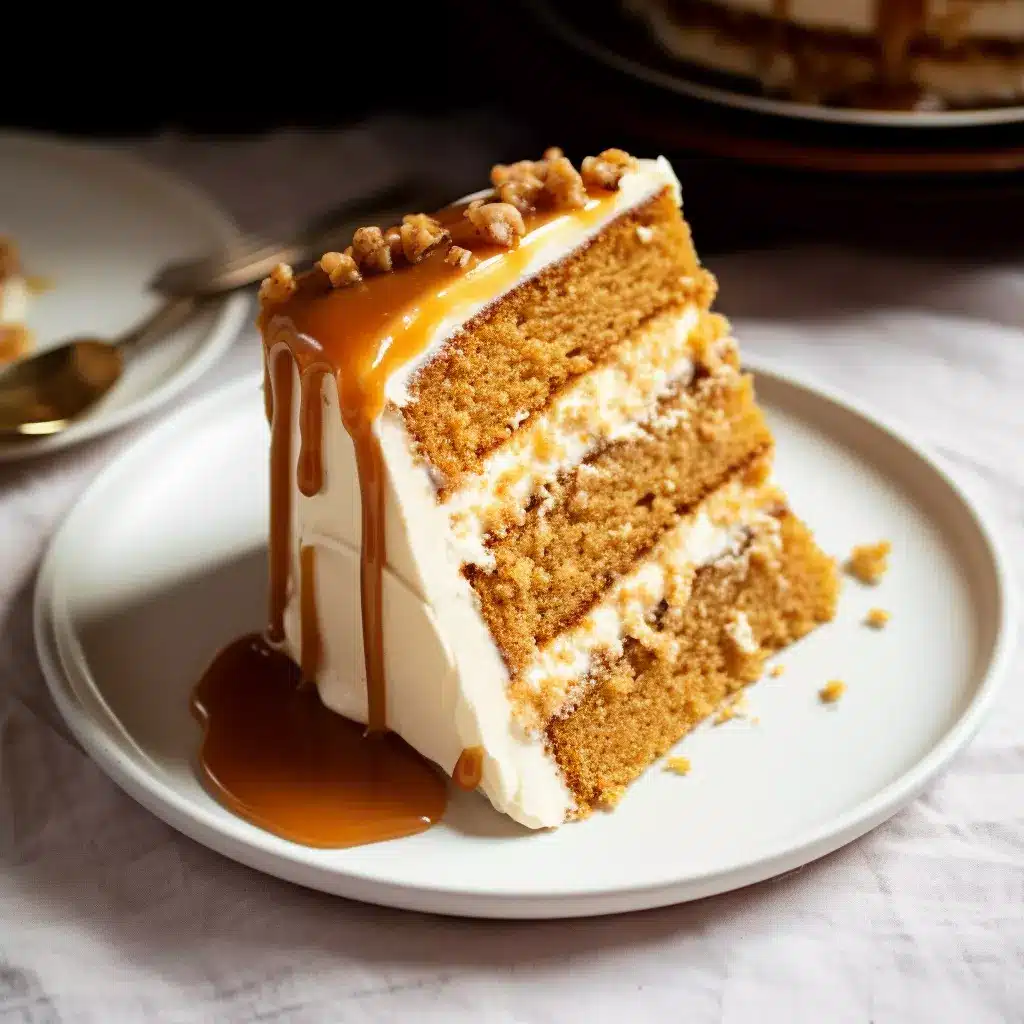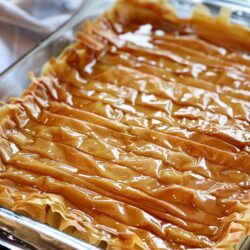WANT TO SAVE THIS RECIPE?

Butterscotch cake is one of the most delicious cakes that can delight your tastebuds with its rich, sweet flavor. You can whisk together the ingredients in just 10 minutes and bake this marvelous cake within 25-30 minutes to savor its perfection. It’s great for any occasion from birthdays to holidays or even a weekend treat. I’ve been baking this cake for years and my family simply adores it. For any sweet tooth like myself who craves a little butterscotch bliss, this recipe is sure to satisfy.
You don’t need any fancy cooking skills to whip up this cake. Believe me when I say you are absolutely going to fall in love with this butterscotch cake recipe!
Can I Use Brown Sugar Instead of Dark Brown Sugar?
Yes, regular brown sugar can be used for a lovely butterscotch cake too. Dark brown sugar simply adds a deeper molasses flavor and color. If using regular brown sugar, you may want to add a tablespoon of molasses for complexity. But either works wonderfully!
Why Did My Cake Sink In the Middle?
It’s likely your butterscotch cake sunk because it was under-baked. Be sure to bake it for the full 25-30 minutes until a toothpick inserted comes out clean. Checking early can cause a dip. And using cake strips prevents a dome top which can sink when cooling. Perfectly baked equals a perfect shape!
Can This Cake Be Made Ahead of Time?
You surely can make this cake in advance. I recommend baking the layers ahead then wrapping well in plastic before freezing. When ready to serve, thaw the frozen cake layers at room temperature for 1-2 hours before frosting and filling with decadent butterscotch.
Should I Ice The Whole Cake Before Adding The Butterscotch Drizzle?
I suggest adding the butterscotch drizzle over the frosting first in the design you like, then smoothing it into the frosting. This creates those delightful butterscotch swirls in the frosting over the entire cake. Simply divine!
Ingredients:
Cake Base:
- Butter: 150 g
- Dark Brown Sugar: 1 ½ cups
- Kosher Salt: ½ teaspoon
- Eggs: 4
- Vinegar: 2 teaspoons
- Sour Cream: ⅓ cup
- Vegetable Oil: ¼ cup
- Vanilla Extract: 1 teaspoon
- Flour: 3 cups
- Baking Powder: 2 teaspoons
- Baking Soda: 1 teaspoon
- Buttermilk: 1 cup
Butterscotch Sauce:
- Butter: 115 g
- Vanilla Extract: 1 teaspoon
- Kosher Salt: ½ teaspoon
- Heavy Cream: ¾ cup
- Dark Brown Sugar: 1 ⅓ cups
Butterscotch Buttercream:
- Softened Butter: 350 g
- Powdered Sugar: 4 ½ cups
- Vanilla Extract: 1 teaspoon
- Milk: 4 tablespoons
- Kosher Salt: ½ teaspoon
- Butterscotch Sauce: ¼ cup
Instructions:
- Butterscotch Sauce Creation: Combine butter, dark brown sugar, vanilla extract, kosher salt, and heavy cream in a saucepan. Melt over medium-high heat, stirring constantly. Once melted, let it simmer for about 3 minutes until thickened. Remove from heat and cool.
- Cake Preparation: In a large bowl, blend softened butter, dark brown sugar, and kosher salt. Add eggs for a smooth mixture. Incorporate sour cream, oil, vanilla extract, and vinegar. Gradually mix in half the flour, baking powder, and baking soda, followed by half the buttermilk. Add the remaining flour and buttermilk. Mix until just combined, avoiding overmixing. Pour into three 8-inch baking pans and bake at 180°C (350°F) for 25-30 minutes. Allow to cool.
- Buttercream Mixing: In a large bowl, whisk room temperature butter, salt, powdered sugar, vanilla extract, cooled butterscotch, and milk until creamy.
- Assembling the Cake: Start with a dollop of buttercream on the cake stand. Place the first cake layer, top with a third of the buttercream, and drizzle butterscotch sauce. Repeat for the second layer, finishing with the third. Frost with remaining buttercream and drizzle butterscotch sauce, creating a marble effect. Best served at room temperature.
Baking Tips:
- Use room-temperature ingredients for a smooth batter.
- Measure flour correctly: stir, spoon into the measuring cup, and level off.
- Avoid overmixing to maintain a moist texture.
- Use cake strips for even baking.
- Line baking pans with parchment paper for easy release.
- Allow butter to reach room temperature for easy mixing.
- Let the cake cool completely before frosting to prevent crumbling and melting of frosting.




